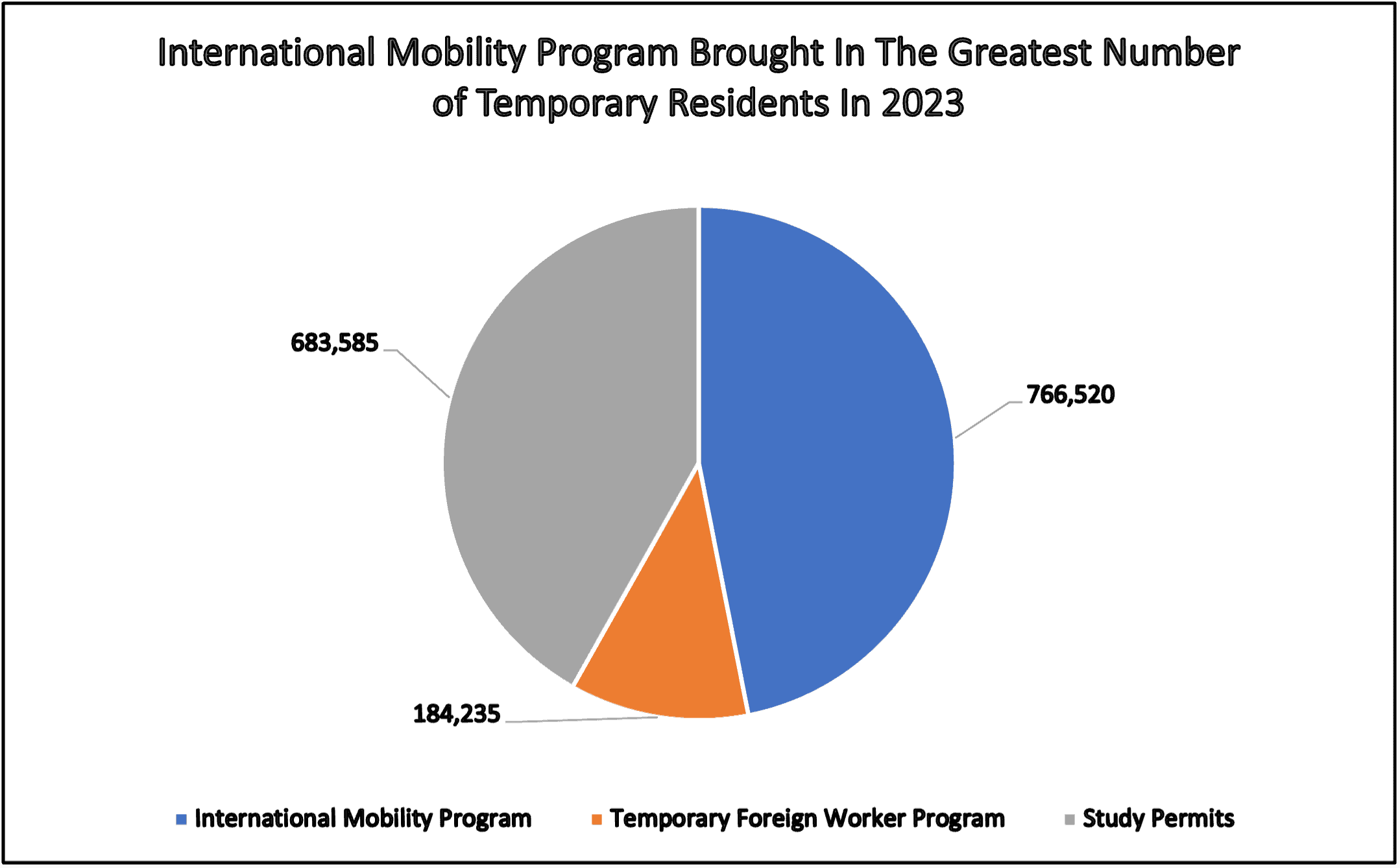Temporary immigration to Canada more than tripled in the years since the start of the Covid-19 pandemic as far more temporary workers and international students chose to come here, reveals the latest data from Immigration, Refugees and Citizenship Canada (IRCC).
In 2019, the last full year before the COVID-19 pandemic, Canada issued a little more than half a million new study permits and work visas, welcoming a total of 522,110 temporary residents.
Jump ahead four years and the number of temporary residents with these permits has skyrocketed, hitting more than 1.6 million as of the end of last year.
The number of work permits approved under the International Mobility Program (IMP) increased by 136.9 per cent during that time, rising from 323,495 in 2019 to 766,520 last year.
Temporary Foreign Worker Program (TFWP) work permit numbers rose by 87.9 per cent during the same period, going from 98,025 in 2019 to 184,235 last year.
Read More
Alberta Targets Healthcare Workers With 34 Canada Immigration Invitations
Spouses Of International Students Studying Specific Degrees To Get Open Work Permits
IRCC To Process Extra H-1B Open Work Permit Applications Already Received

The 70.6 per cent spike in international students in Canada during the pandemic years only exacerbated the situation, as the number of study permits rose from 400,590 in 2019 to 683,585 last year.
Although the growth of international students was the slowest of any of these groups of temporary residents during the pandemic years, they were the first group to be targeted for limits to temporary immigration as Ottawa wrestles with a housing crisis and these international students are blamed for the rise in demand for apartments.
Watch Video
In January, Immigration Minister Marc Miller put a cap of 606,250 on new study permit applications this year, a move which is expected o reduce the number of new study permits issued this year by 40 per cent.
“The intent of these Instructions is to ensure the number of study permit applications accepted into processing by the Department of Citizenship and Immigration … within the scope of the instructions does not exceed 606,250 study permit applications for one year beginning on the date of signature,” the Canada Gazette reported on Feb. 3.

Then, on March 21, the immigration minister announced Ottawa will be taking further steps to limit temporary immigration with the first temporary immigration levels plan to be unveiled in September.
That move is expected to reduce the number of temporary residents by five over the coming three years.
Miller has said he will be meeting with provincial and territorial immigration ministers in May to determine the specifics of these temporary immigration levels.
“Provinces and territories know their unique labour needs and capacity and need to assume responsibility for the people that they bring in as well,” said Miller.
The immigration minister has admitted that Canada has become addicted to rising numbers of temporary workers and international students and needs to make changes so the immigration system can be more sustainable.
Economist Warns Lower Temporary Immigration Could Drag Down The Canadian Economy
“There should be an honest conversation about what the rise in international migration means for Canada as we plan ahead,” Miller said.
But others warn that limiting temporary residents to Canada may lead to an economic downturn.
In Temporary Workers, Temporary Growth? How a Slowdown in the Recent Migration Surge Could Exacerbate Canada’s Downturn, Desjardins principal economist Marc Desormeaux warns that the record numbers of temporary residents could soon ease off.
Since temporary residents are the primary drivers of population growth in Canada, a significant drop in their numbers could lead to a stalling of the Canadian economy.
“History suggests the recent surge (in the number of temporary residents in Canada) could ease significantly, exacerbating a nascent economic slowdown,” cautions Desormeaux.
“That could have significant consequences nationwide, most notably in the largest provinces.”
In their most recent fiscal plans, British Columbia and Ontario have already included contingencies for the possibility of a downturn in temporary residents in an attempt to create buffers to the accompanying downturn in tax revenues to provincial coffers and a more sluggish economy should there be a drop in temporary residents.
“We must nonetheless consider downside demographic scenarios, particularly when potentially higher for longer interest rates pose risks for economic growth, borrowing costs and debt sustainability over time,” wrote Desormeaux.
British Columbia, Ontario Already Planning For Lower Temporary Immigration
In British Columbia and Ontario, he predicted a downturn in temporary residents could create a 0.8 to 1.9 percentage point drag on economic growth next year.
He recommends Canada beef up its data collection on the number of temporary residents in the country.
“We also reiterate our call for more and better data on temporary migration. For the foreseeable future, Canada and all its provinces will continue to grapple with the immense challenges of a rapidly aging population and a lack of affordable housing supply. To meet these challenges, we’ll need clear information about the individuals who can help address them.”
Canada already sets levels for permanent immigration and is set to welcome 485,000 new permanent residents this year under the Immigration Levels Plan for 2023 – 2025.
The country is planning to welcome an additional 500,000 new permanent residents in each of the subsequent years.



